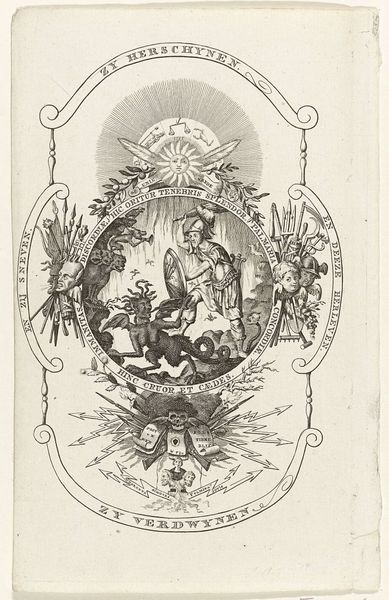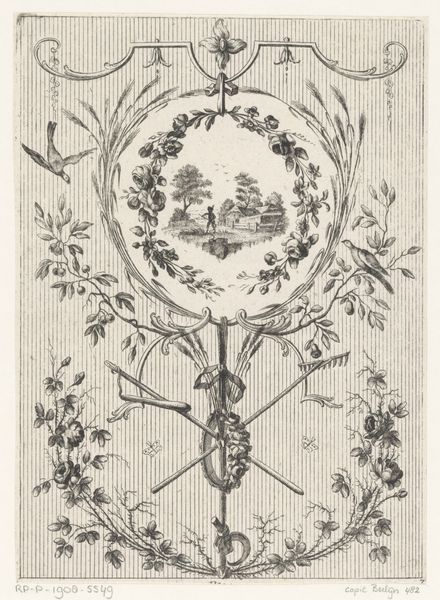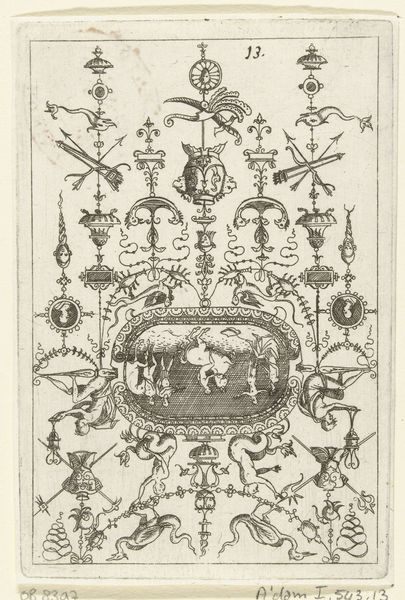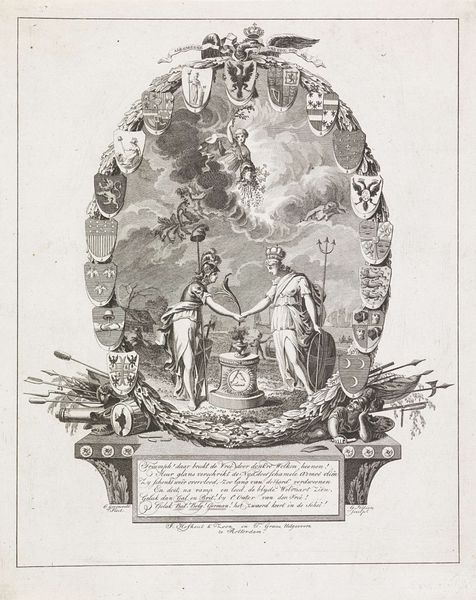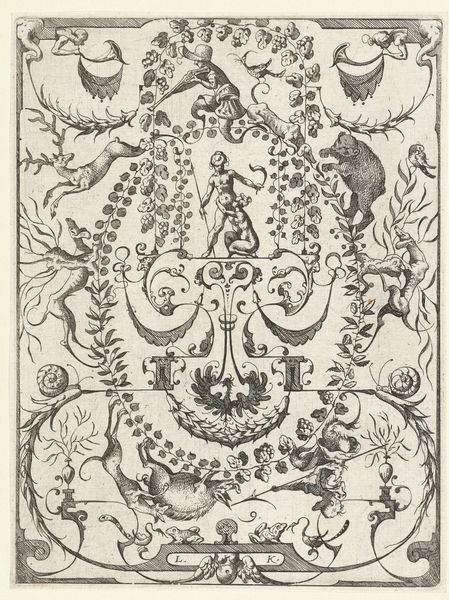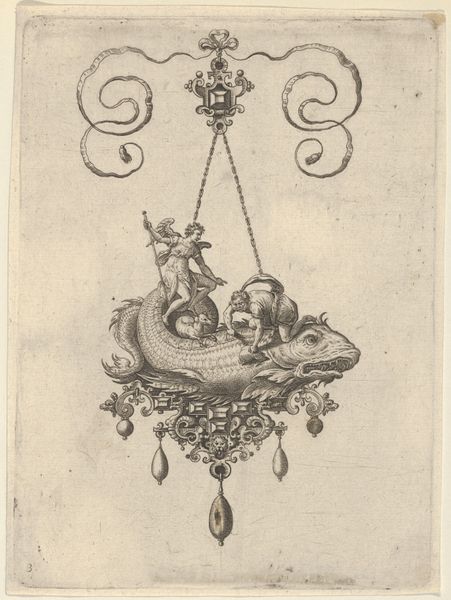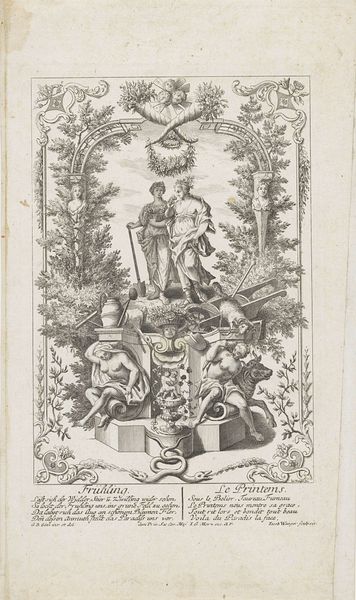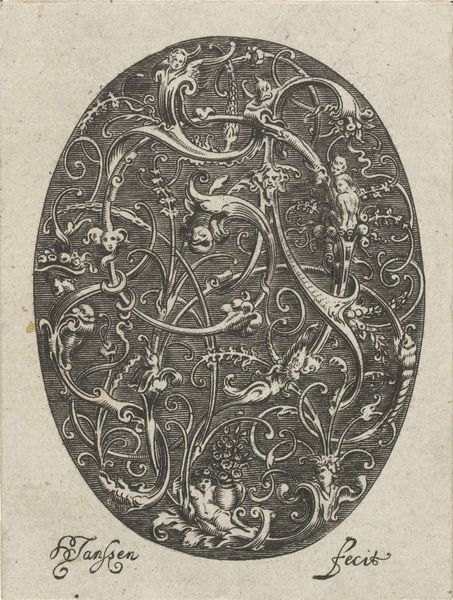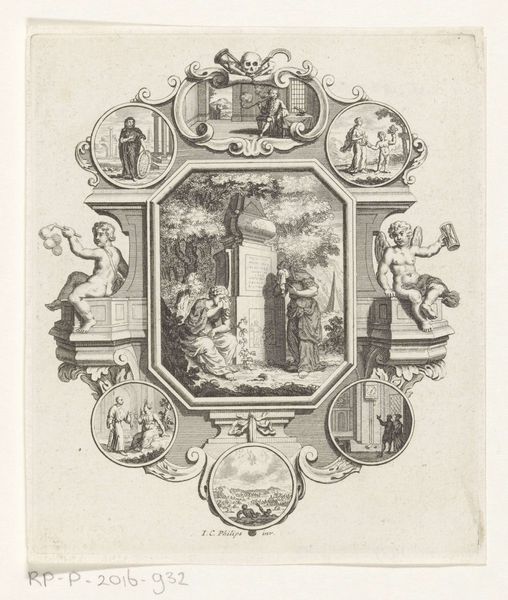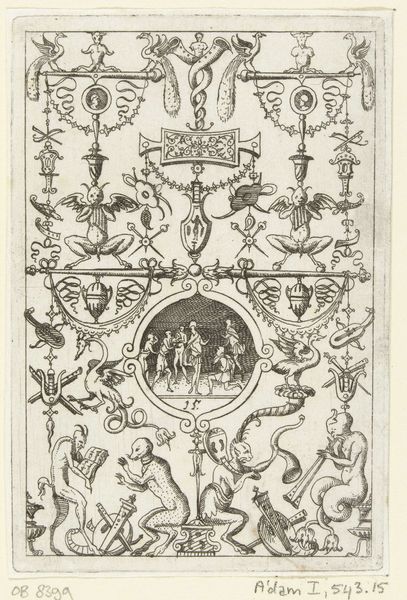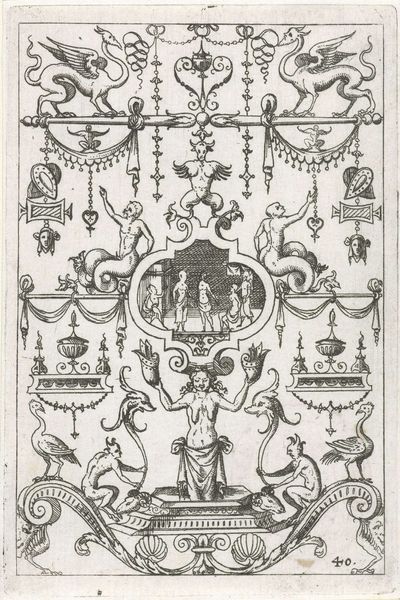
print, engraving
#
allegory
#
baroque
#
pen drawing
#
mechanical pen drawing
# print
#
pen illustration
#
pen sketch
#
old engraving style
#
figuration
#
ink line art
#
personal sketchbook
#
pen-ink sketch
#
line
#
pen work
#
sketchbook drawing
#
decorative-art
#
engraving
Dimensions: height 199 mm, width 160 mm
Copyright: Rijks Museum: Open Domain
Curator: Alright, let’s dive into this engraving, "Medallion with Floral Motives," created around 1635 by Balthazar Moncornet. Editor: It’s such a detailed piece! The medallion is bursting with flowers, but the figures underneath are…almost comical. What do you see in this piece, especially beyond just the pretty floral design? Curator: I see a complex interplay of power, spectacle, and identity typical of Baroque allegory. The floral medallion itself could symbolize idealized beauty or even the controlled abundance sought by the elite. But it’s the figures below that demand interrogation. Editor: In what way? Curator: They're reminiscent of commedia dell'arte characters, often used to critique social norms. Are they jesters performing for the elite reflected in the medallion, or are they mocking them? Consider the era’s rigid social hierarchies – how might these figures, through humor, be subtly challenging those structures? Think of the history of jesters and the power that subversive humor gave them. Editor: So, the seemingly decorative floral design contrasts with a potential social critique happening below? Curator: Exactly. Moncornet places the refined artifice of the elite – symbolized by the flowers – directly above a carnivalesque scene populated by marginalized figures. Are we meant to admire the medallion’s beauty, or question the social order that it represents, particularly when viewed through the lens of those it often excludes? How are issues of class and performance being represented? Editor: It makes you wonder if the artist was intentionally subverting the expectations of his patrons. Curator: Precisely! This reading situates the work within a broader conversation about power dynamics in 17th-century Europe, forcing us to look beyond surface aesthetics and consider the voices often silenced within these grand narratives. Editor: I’ll definitely look at Baroque art differently now. There's a lot more happening beneath the surface than I initially thought. Curator: Indeed, it's about understanding who has the power to create symbols and who is represented--or misrepresented--within them.
Comments
rijksmuseum about 2 years ago
⋮
The back of this medallion displays a combination of the cosse de pois style and floral patterns. We can identify various species of flowers that also feature frequently in 17th-century flower still lives: carnations, peonies, roses, and tulips. Despite the economic bubble caused by the popularity of tulips in 1637 they continued to be a favourite decorative ornament for gold- and silversmiths.
Join the conversation
Join millions of artists and users on Artera today and experience the ultimate creative platform.
